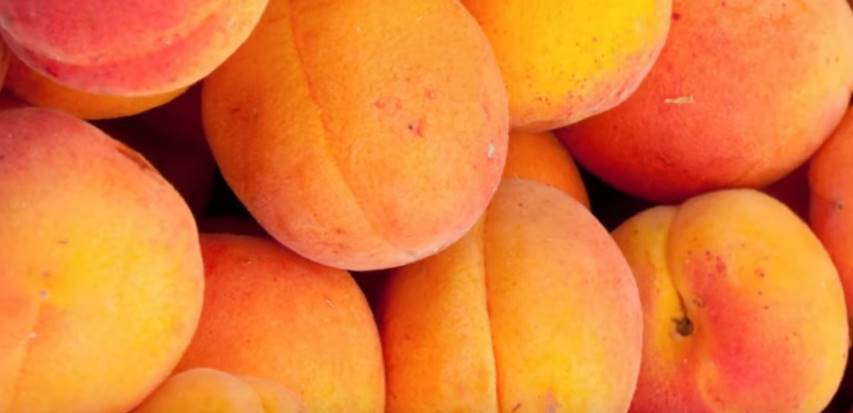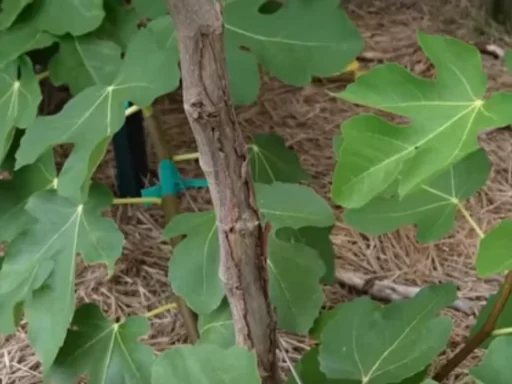As the summer days draw to a close, many people assume that the gardening season is over. However, if you’re planning on growing fruit trees, early fall might be the perfect time to plant. Despite common belief that spring is the optimal time to plant, planting in the fall offers many advantages, allowing your trees to establish themselves before winter and leading to stronger growth come spring. In this article, we’ll explore why fall is the best season to plant your deciduous fruit trees, as well as which trees you should consider for your orchard.
Why Fall is the Best Time to Plant Fruit Trees
Jumpstart on Growth
One of the biggest advantages of planting fruit trees in the fall is that it gives the tree a head start on root establishment. By placing the tree in the ground when the weather is still warm, but not scorching hot, the roots can begin to grow before the ground freezes. This root development is crucial for the tree to survive the winter and thrive in the spring.
If you wait until spring to plant your fruit trees, you essentially lose an entire growing season as the tree focuses on establishing roots before it can grow vertically. In contrast, trees planted in the fall already have several months of root growth by the time the weather warms up, giving them a whole year of growth that spring-planted trees won’t have. This can lead to earlier fruit production—meaning you could enjoy fresh fruit from your trees sooner.
Reduced Maintenance and Watering
Fall temperatures are typically cooler, which means less evaporation from the soil. This reduction in heat means that you won’t need to water your fruit trees as often. In many areas, the fall and winter months bring more rain than the summer, further reducing the need for irrigation.
By planting in the fall, your trees are exposed to cooler, less stressful conditions, allowing them to establish roots without the risk of heat stress. By the time summer rolls around, your trees will already be anchored in the soil and better able to withstand high temperatures, reducing the need for frequent watering.
Chill Hours and Early Harvest
Many deciduous fruit trees require “chill hours” to produce fruit. Chill hours are the number of hours a tree spends in temperatures between 33°F and 45°F. Without sufficient chill hours, the tree may not produce blossoms, which means no fruit.
By planting in the fall, your trees have the opportunity to accumulate chill hours during the winter, allowing them to bloom on schedule in the spring. If you plant in the spring, there’s a chance the tree won’t receive enough chill hours before blooming season begins. By planting in the fall, especially if you invest in a larger, more mature tree, you may even see fruit production the following summer.
12 Fruit Trees to Plant in Fall

Now that you understand why fall is the ideal time for planting fruit trees, let’s dive into 12 fruit trees that are perfect for fall planting.
1. Apple Trees
Apple trees are a fall favorite, known for their cold hardiness and adaptability. They can be grown in a wide range of climates, with some varieties tolerating zones as cold as 3 and 4. Whether you live in a cooler northern climate or a more temperate region, you’ll find an apple variety that will thrive in your backyard.
2-6. Stone Fruit Trees (Peaches, Nectarines, Apricots, Plums, Cherries)
Stone fruits are deciduous and adaptable to various climates, making them ideal for fall planting. Whether you’re growing peaches in the heat of southern Florida or plums in a cooler zone, you can find a variety suited to your climate. Additionally, there are hybrids like the pluot, which is a cross between a plum and apricot, offering even more variety for your orchard.
7-8. Pear Trees (European and Asian)
Pear trees are known for their disease resistance and wide adaptability. European and Asian varieties can often be grafted onto one another, making them versatile. Pears grow well in climates ranging from zones 4 to 10, meaning you can enjoy their sweet fruits no matter where you are.
9. Pawpaw Trees
Native to the United States, the pawpaw tree produces the largest edible fruit native to North America. These trees are low maintenance and highly cold hardy, making them perfect for fall planting. While pawpaws require a bit of patience—they can take a few years to bear fruit—they are well worth the wait.
10-11. Persimmon Trees (Asian and American)
Persimmons are another fruit that thrives when planted in the fall. American persimmons are extremely cold-hardy and can grow in zones as cold as 3 and 4. Asian persimmons, while less hardy, are still an excellent choice for fall planting in warmer climates. These trees produce sweet, flavorful fruits that are a favorite of many gardeners.
12. Fig Trees
Figs are known for their luscious, sweet fruit and can be grown in a variety of climates. While they do best in warmer regions, they can survive cooler climates with some winter protection. Planting them in the fall allows them to establish their roots before winter hits, making them more resilient come spring.
The Exception: Citrus Trees
One fruit tree you should avoid planting in the fall is the citrus tree. Citrus trees are not deciduous, which means they don’t go dormant during the winter. If planted in the fall, they may not survive the cold temperatures. Citrus trees are best planted in the spring when the weather is warm and stable.
Frequently Asked Questions
1. Why should I plant fruit trees in the fall?
Planting fruit trees in the fall gives them a head start on root development, allowing them to establish themselves before winter. This leads to faster growth and earlier fruit production.
2. Can I plant all types of fruit trees in the fall?
Most deciduous fruit trees, such as apples, pears, peaches, and plums, can be planted in the fall. However, citrus trees should be planted in the spring due to their sensitivity to cold temperatures.
3. How do I care for fruit trees planted in the fall?
Fall-planted trees require less watering than those planted in the spring, as cooler temperatures reduce evaporation. Be sure to water them regularly until the ground freezes and apply mulch to retain soil moisture.
4. What are chill hours, and why are they important?
Chill hours are the number of hours a tree spends in temperatures between 33°F and 45°F. Many fruit trees require a specific number of chill hours to produce blossoms, which are necessary for fruit production.
5. How soon will I see fruit after planting in the fall?
The time it takes to see fruit depends on the type and age of the tree. Some trees may take two to three years to bear fruit, but planting in the fall can speed up this process.
6. Can I plant mature trees in the fall?
Yes, mature trees can be planted in the fall. In fact, planting a larger tree in the fall gives it a better chance to establish before the following spring.
7. Do I need to protect fall-planted trees during the winter?
In most cases, deciduous trees don’t need extra protection during the winter, as they enter dormancy. However, in very cold climates, applying a layer of mulch around the base of the tree can help insulate the roots.






